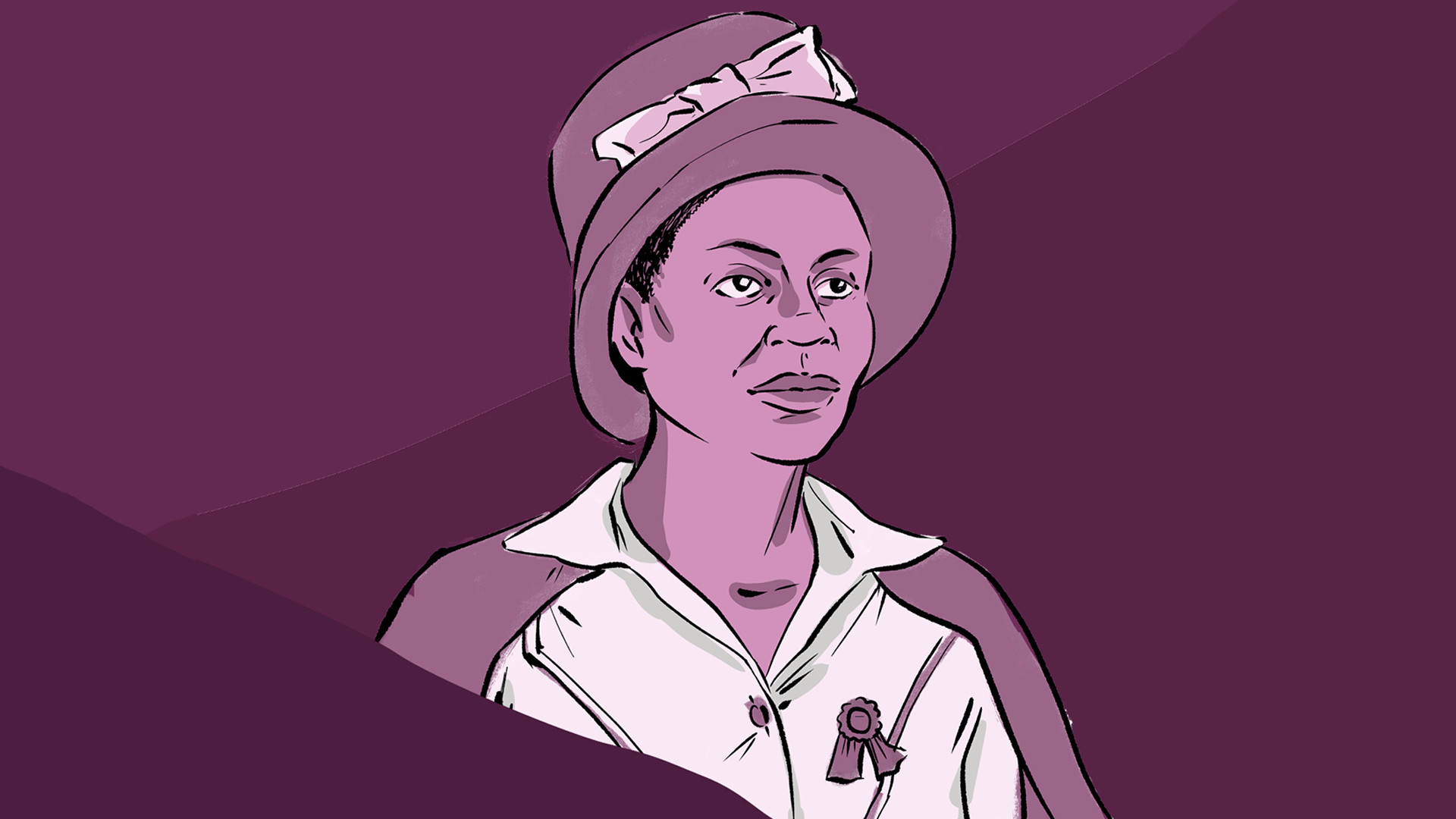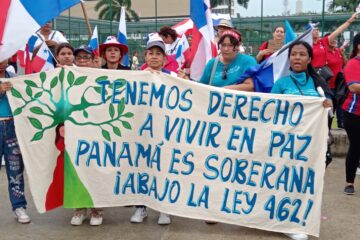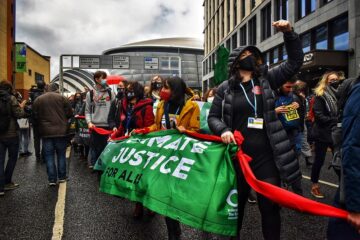Born Josephine Winifred Mpama on 21 March 1903, Josie – as she was known to family, friends, and comrades – came to have many names depending on the manoeuvres she needed to make in different contexts. Where the English language dominated and allowed for greater social and economic mobility, her surname was anglicised and she went by Josie Palmer. At other times, when she was with her common law partner, Edwin, and respectability politics came into play, she used his surname and became Mrs. Mofutsanyana. In more covert work, her known aliases included Winifred Palmer, Beatrice Henderson, and Red Scarf.
Josie was born a year after the end of the South African War (1899–1902), during which the British Empire and the Boers (the descendants of Dutch colonial settlers) wrestled for control over the region. She grew up and became politically active during one of the most tumultuous political periods in South Africa’s history, when the white minority was attempting to cement its control of land, labour, and political power. At the same time, deep shifts and conflicts were also taking place in the international political and economic landscape: before she reached the age of forty, Josie would live through the First World War, the Russian Revolution, the Great Depression, the formation of the Communist International (Comintern), the rise of European fascism, and the outbreak of the Second World War.
(…)
Serving the Burgeoning White Economy
During the turn of the twentieth century, African men from rural areas in South Africa and neighbouring countries were drawn into the emerging industrial hub of Johannesburg as labour for the city’s churning mines. Only men were permitted to undertake this type of work and, upon their arrival, lived in semi-carceral worker compounds, renumerated at a rate so low that they could not support their families back home. The making of modern South Africa was rooted in a segregated, segmented organisation of labour, relying not only on the ruthless exploitation of a racialised working-class majority, but also benefiting substantially from gendered divisions of labour within that workforce. As the leading journalist and South African communist Ruth First said in her speech on South African women’s day in 1978:
It is a system of cheap labour, of migrant labour, which first drags the men out of the rural reserves to serve the white economy, then shovels them out of that economy when they are too old and sick to work; sends them out of the way, back to the reserves when they are unemployed. Thus, the white rulers simultaneously absolve themselves of any responsibility for the old, the sick, the unemployed and their families; and remove the source of rebellion of working-class revolt.
It is the women who carry the heaviest burdens of this migrant system. They are left behind with the burden of the family; and they are left behind as producers, to keep the agriculture going. So, they are responsible for both family and production.
This labour consisted not only of caring for the young and old, the sick and unemployed, to ensure that families and communities survived in the rural African ‘reserves’ (a concept taken from Native American reservations in the United States), but, later, also included the domestic and social reproductive work that was essential to maintaining the white ruling class.
Although African women were initially excluded from the burgeoning industries, the harsh conditions on the rural reserves – along with the fact that they received little to no remittances from their urban-based male relatives – eventually pushed them to seek out work or livelihoods in cities. Most toiled as domestic servants, beer brewers, small traders, and washer women. Precarity and low wages characterised this new reserve army of casualised labour, which was pushed to the peripheries of cities and heavily controlled and policed.
In her early teens, Josie joined this informal workforce, taking on a variety of short-term, precarious domestic jobs such as washing clothes, cleaning homes, and cooking, as well as two sewing apprenticeships. She earned extremely low wages, in part due to her young age.
After the South African War, the British and Boers (or Afrikaners) entered into an alliance to establish the Union of South Africa in 1910 and enact a system of oppressive laws and discriminatory processes to cement white rule. African families, homes, labour, and lands were targeted in a number of ways, notably through the pass law system, which placed various restrictions on the African majority and their ability to live in cities, move freely, and work. The system included measures that made strikes a criminal offence for African workers, barred them from certain types of employment, and provided them with less injury compensation than their white counterparts. These policies sought to control and limit their ability to work in urban areas, which had the highest earning potential, and limit their social and, ultimately, political existence. Yet, pass laws were also used to ensure a cheap supply of labour in cities designated almost exclusively for the burgeoning white economy. At various points, the apartheid system was enforced through systematic policing, such as through the use of pass books, which Africans had to carry at all times and which contained personal identification information, including biometric and employment details. Under this regime, Africans were subject to constant surveillance, harassment, and the threat of being fined or arrested.
Popular and organised resistance to pass laws emerged across the country in the early 1910s, one of the earliest being the historic women-led campaign of 1913 in Bloemfontein. Although these struggles were able to win concessions in some cases, the pass law system continued to expand. The Natives (Urban Areas) Act, passed in 1923, paved the way for the tightening of the influx control system that would unfold during the apartheid era, which further restricted the movements and conduct of African people in metropolitan areas. Under the 1923 act, African people were defined as ‘temporary sojourners’ who were only permitted in cities insofar as they served ‘the wants of the white population’, as the act states. Though laws enacted in 1902 and 1913 had already established the grounds for racial segregation and land dispossession (allocating less than ten percent of arable land to Africans), the 1923 Natives Act gave local authorities greater powers to enforce controls within their municipalities. It was within this context that Josie made her political debut.
Potchefstroom Resistance
Potchefstroom was a political stronghold for the Afrikaner settler project and, later, the apartheid system. Unlike Bloemfontein, where anti-pass struggles developed within a context of labour shortages, the struggles in Potchefstroom unfolded within the context of a labour surplus. In an attempt to control the growing African population in the area, the colonial government imposed a range of restrictions, including night curfews and fees for public services (such as the construction of water pipes), many of which deeply affected African women.
Fed up with an onslaught of restrictions and the increased costs to their daily lives, on 28 September 1927, an organised group of around 200 African women marched in opposition to the closing of water wells. The women, many of whom made their living by washing white families’ clothes, marched to the local magistrate with a red, white, and blue banner inked with the words ‘For Mercy’ to show their discontent.
The state enacted such measures in order to extract revenue from African households to cover public financial deficits that otherwise would have had to be paid by white households. The most intense opposition emerged in response to the lodger’s permit policy, which required anyone above the age of eighteen living in a home owned by another person to register and pay the municipal authorities for a monthly permit. This meant that one’s own children and relatives had to pay a monthly fee to live in their family homes. Those who did not pay faced prosecution, eviction, and expulsion, further undermining the social cohesion of the African family already unseamed by the migrant labour system.
Alongside other community leaders and communist cadre (including Edwin Thabo Mofutsanyana, who later became her husband), Josie led important protests against the local municipality and white residents over lodger’s permits, including a passive resistance campaign that called for the refusal to pay the lodger’s fee. Women were particularly creative and resilient during this period, using various tactics of collective resistance such as quickly returning evicted residents and their furniture back to their homes.16 Though the protests began spontaneously, the CPSA provided organisational and legal support as well as political direction to the movement. By 1928, the growing local CPSA had roughly one thousand members, with Josie amongst the first recruited in this wave.
In the lead up to a mass meeting of over five hundred people held on 16 December 1929 that aimed to agitate and recruit people to struggle against the racist regime, CPSA flyers declared:
Roll up in your thousands! African workers! You have no guns or bombs like your masters, but you have your numbers; you have your labour and the power to organise and withhold it. These are your weapons; learn to use them, thereby bringing the tyrant to his knees.
The struggle in Potchefstroom peaked in January 1930, when a general strike largely shut down the town. African women led the charge, organising pickets, blocking key roads, and preventing other Africans from going to work.
Though these struggles created obstacles for the local authorities, who finally capitulated and dropped the lodger’s permit fees in May 1931, by May 1930 active resistance had died down, party organisation had almost ceased to exist, and Josie was forced to leave the town. The white authorities used the struggle in Potchefstroom as an experiment in how to improve control mechanisms, which would find new, harsher expressions in later years.
The community struggles that unfolded in and around the resistance to the lodger’s permits in Potchefstroom were formative experiences for Josie, both in terms of organising women and being introduced to communism. They cultivated in her a deep sense that, in order to advance, the political struggle had to be grounded in the bread-and-butter issues that most affected the majority. When members of the CPSA or officials in the Comintern downplayed the importance of these struggles, Josie continued to insist that the party needed to support them in order to be more relevant to the working masses.

Read the full story on Josie Mpama and her contribution to women’s organizing in South Africa in the original publication by Tricontinental: Institute for Social Research in Portuguese, English, and Spanish.

This is an excerpt from the article “Josie Mpama,” part of the “Women of Struggle, Women in Struggle,” by Tricontinental: Institute for Social Research.




